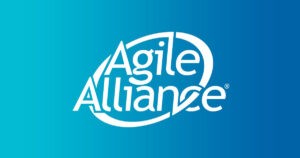Alex Brown and Jeff Sutherland will outline an object-oriented model for scaling Scrum across the entire business enterprise. A modular approach allows the system to function using different specific solutions for each module, which enables this approach to work successfully across a broad range of contexts unlike “tightly coupled” solutions.
There is tremendous interest today in how to scale Scrum across a complete enterprise. However, much of the thinking thus far on scaling Agile principles has focused on very proscriptive answers. They work well in one organizational context, but struggle in others. A universal enterprise framework must allow the organization to incrementally inspect and adapt it’s own structure without causing system-wide consequences.
Our answer to this dilemma borrows from the roots of Scrum and object-oriented architecture (OOA) to create loosely coupled functional modules. When Jeff and Ken originally developed Scrum, they deliberately based it on a minimalist OOA where each element functions independently and adapts to a variety of situations. The retrospective definition, for example, only includes: goals, timing, attendees and outputs, leaving teams to determine HOW to implement it. The Agile community needs a similar loosely coupled framework for scaling Scrum that can act as the “skeleton” of functions, connections, inputs and outputs to which the “muscle” of different successful practices can be connected.
This session will: 1) lay out the full case for a modular vs. deterministic model; 2) present an overall vision for modular scaled Scrum that spans the Team, Business Unit, and Enterprise levels, and; 3) give some specific examples of different successful practices used to satisfy the overall module function. Participants will not leave this session with a cookie-cutter answer for large-scale Scrum implementations. However, it will fundamentally change the way they think about the agile processes within their organization and will equip them to lead a thoughtful exploration of what the organization really needs from scaling Scrum.





